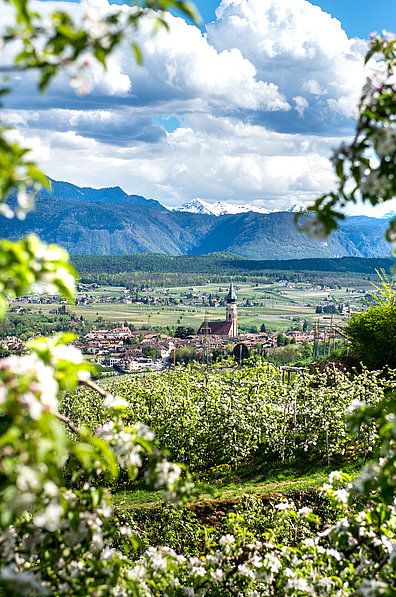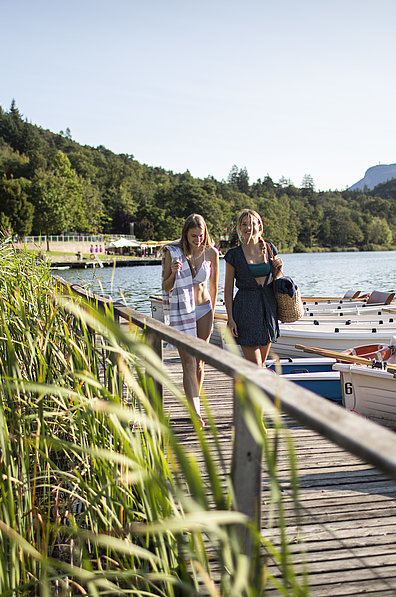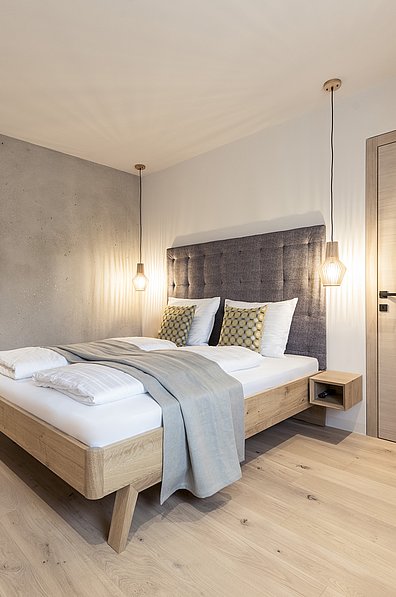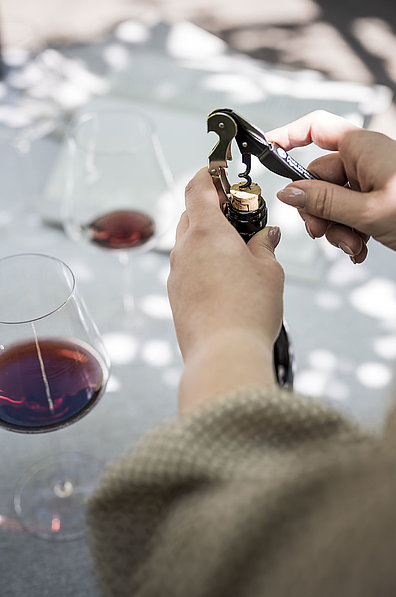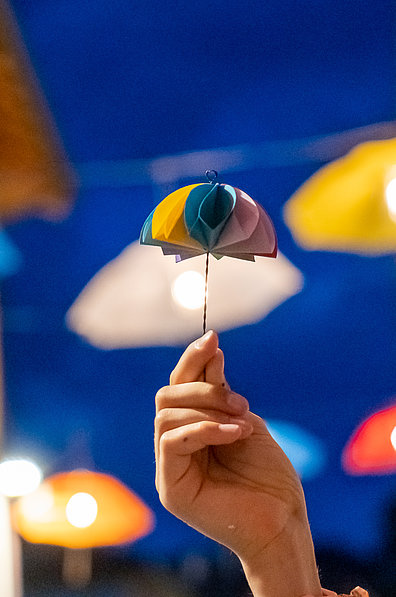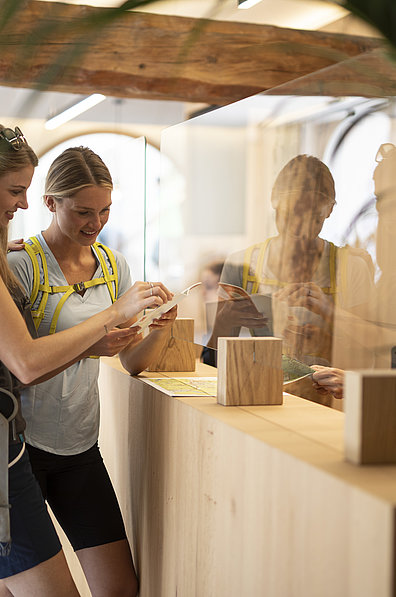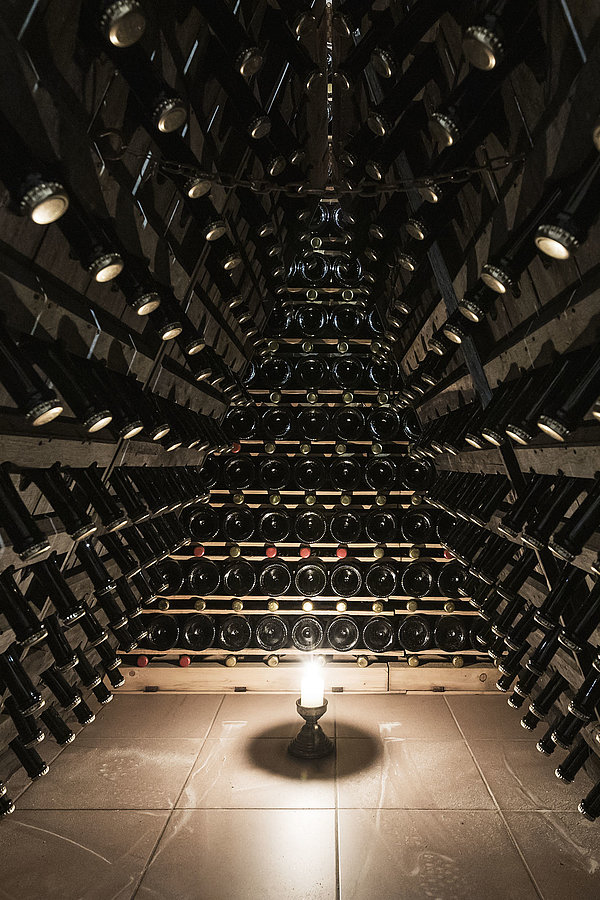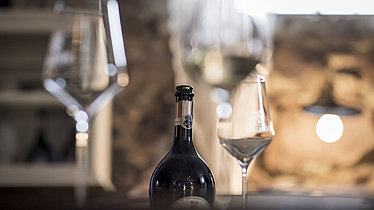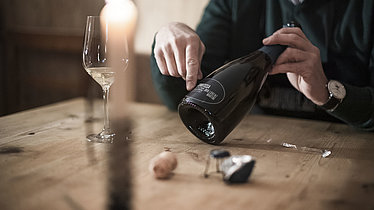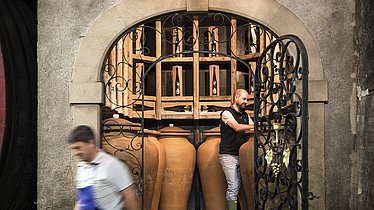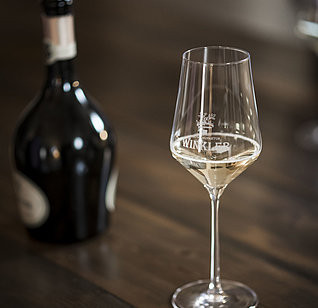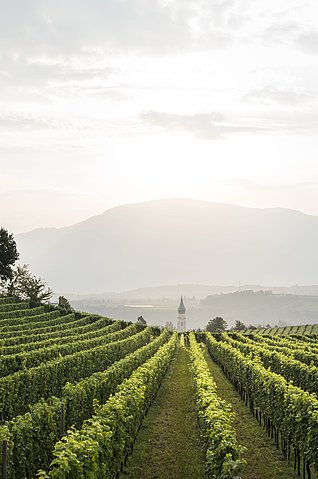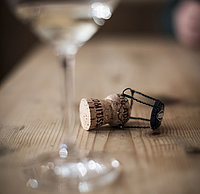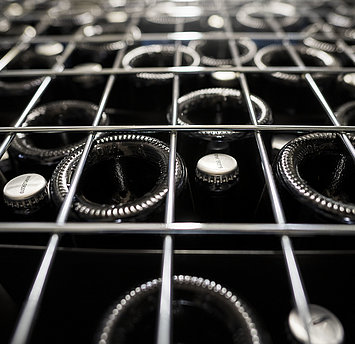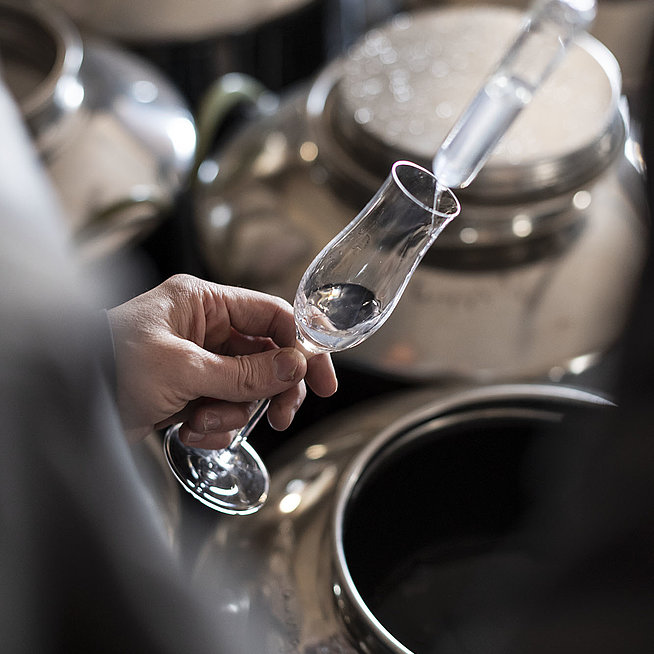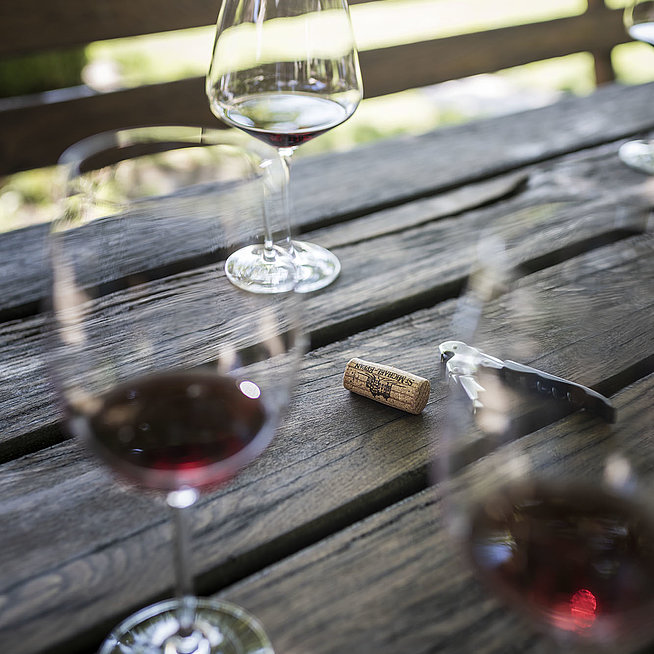Eppan Sparkling Wine
From the pearls in the glass
In the wine-dominated Eppan region, the production of sparkling wine is also a tradition.
A tingling search for traces among the three sparkling wine producers.
Pearls are precious, they ennoble moments: The bubbles in the champagne glass are fleeting, but that does not detract from the pleasure. The lords of the numerous Eppan estates, mostly Austrian aristocrats, already knew this and poured themselves the first "Überetscher Goldchampagne" as early as 1902.
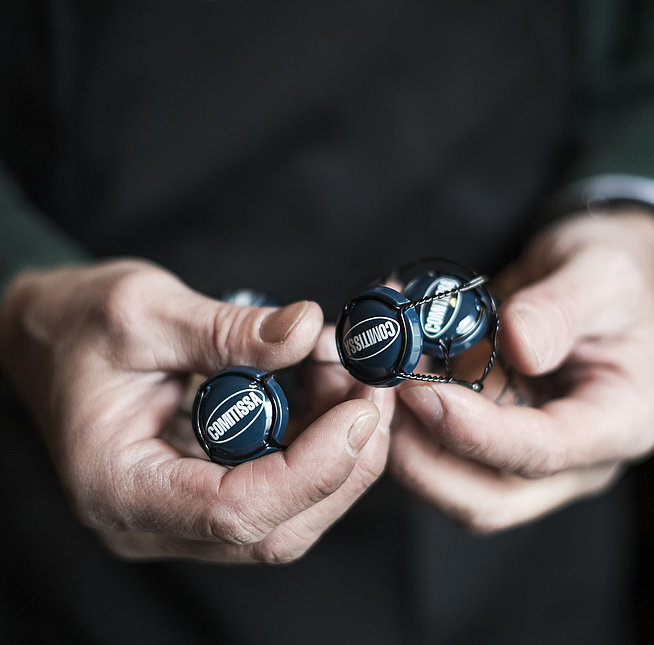
A countess with a blue label
Lorenz Martini Sparkling Wine Cellars from Girlan
"So this is where the cradle of South Tyrolean bottled fermented sparkling wine lies," explains Lorenz Martini from Girlan almost reverently. His father had once pressed a few hundred bottles of sparkling wine for his own use. "And I was fascinated," the son recalls. He wanted more and started his own production in an old cellar in 1985. Today, the Lorenz Martini sparkling wine cellar produces 15,000 to 20,000 bottles of sparkling wine a year. The Comitissa Pas Dosé Riserva presents itself with a noble name and a noble blue label. Comitissa in Latin stands for countess. Pas Dosé refers to the extreme dryness with minimal residual sugar (1.5 g/l) and the omission of added sugar in the dosage. For the blending ratio of Chardonnay, Pinot Blanc and Pinot Noir, Martini has meanwhile "his own recipe".
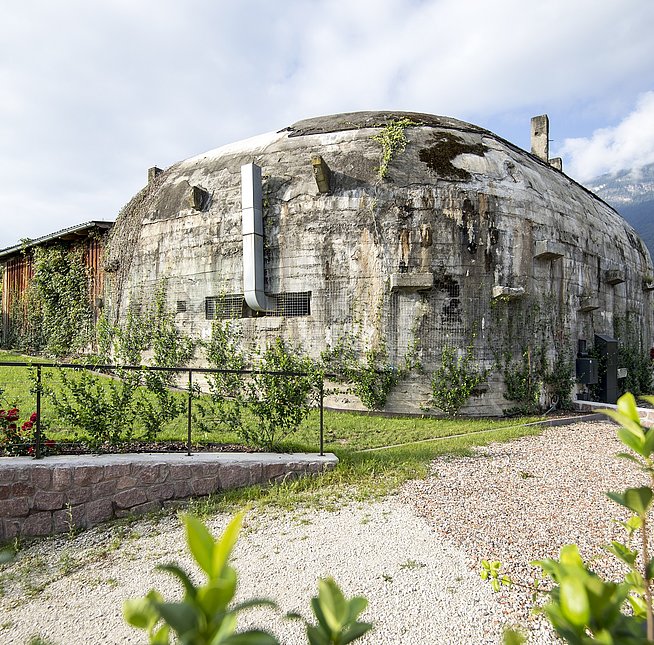
A bunker for the Praeclarus sparkling wine
Sankt Pauls Winery
The St. Pauls Winery, on the other hand, relies exclusively on the Chardonnay grape. "We have been making sparkling wine since 1979," reports chairman Dieter Haas. The current annual production is 35,000 bottles. The Praeclarus Brut, a "sparkling wine for everyone", has recently been rejuvenated by reduced bottle ripening. It lies on the yeast for at least 30 months before it is disgorged (= freed from the iced yeast plug) and bottled. The place where the wine is fermented in the bottle is special, because the St. Pauls winery stores its sparkling treasures in a bunker. In front of the St. Pauls field, not far from the village, the striking, round-roofed building from 1937 watches over six or seven vintages. The metre-thick walls ensure constant temperature and humidity. The latest newcomer is stored on the yeast for a whole 60 months. "With the Praeclarus Pas Dosé, we have added a vintage sparkling wine to the Brut," says Haas. It is a sparkling wine par excellence, for which only selected wines of a special year are refined. The current one is the one from 2014.
The Praeclarus sparkling wines from the St. Pauls Winery are literally bunkered. The building, which is ideal for storage, can be visited by groups in summer as part of guided tours and on request.
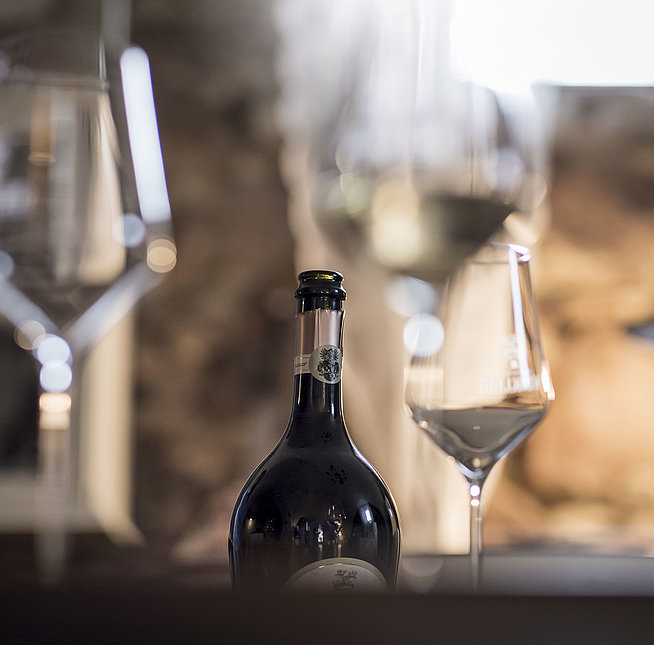
A new start with "Lamm N° 12”
Winkler Sparkling Wine Manufactory
The "Lamm N° 12" sparkling wine from the Winkler sparkling wine producer in Girlan is presented in a pot-bellied bottle and a flower-filled box - named after the family residence at Lammweg 12. "The reason for this is that the manual work from the vineyard to the entire sparkling wine production is fundamental and will remain so in a family business," says owner Michael Winkler. He turns the bottles in the riddling desks, which originate from Champagne, all individually and by hand. After 20 years of standstill, he has revived sparkling wine production. Founded in 1977 by father Helmuth Winkler, the business had to be closed down in 2001 due to health reasons. Finally, on 29 March 2021, the eldest son presented a fresh, drinkable sparkling wine, produced according to the Champagne method from Chardonnay (70%), Pinot Noir (20%) and Pinot Blanc (10%), extra Brut with 3 g/l residual sugar. The grapes for the annual production of 13,000 bottles come from sites at altitudes of 550 metres and above. "High acidity with phenological ripeness is important for our style," explains Winkler. The elegant presentation is part of a larger whole, to be joined by a rosé in 2022.


